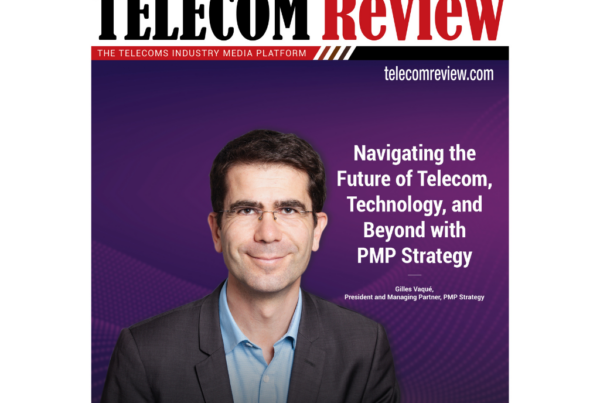According to KPMG-Qinghua University’s Assurtech in China 2020 report, the Chinese insurance market is now number 2 in the world, accounting for 11% of overall premiums collected. In the 2019 Global Fintech Ranking Table, 3 Chinese Fintechs are among the top 10, including the number 1 Ant Financial [1] , and they all have their insurance activities, particularly in the fields of e-commerce and finance inclusive. Even if the insurance penetration rate and density on the Chinese market are still low (5% and 3,500 RMB / person vs. 10.6% and 31,161 RMB, or US $ 4,569 / person in France), it is undeniable that the Chinese market, in particular that of Assurtech, remains very dynamic.
Capitalizes on their in-depth knowledge of their consumers’ habits
Chinese players use their knowledge of the uses and needs of their customers to develop offers around the most popular uses of everyday life for which internet flows are important. They have been able to create, produce and offer products with a customer experience (cross sector-market-actor, O2O and seamless).
Today the market of Chinese Assurtech after attacking the data and process it is now starting his 3 rd digitizing phase at the business model. From a business point of view, the Assurtech ecosystem is present across the entire insurance value chain: R&D and product design, distribution and sales, underwriting, claims, risk control, process management, etc.
From a technological point of view, Assurtech is being used to or improve the comfort of use, or to cover new or existing needs but not satisfied, or to make business model innovations possible, no matter what. ‘they are 5G, Big Data, IA, Blockchain [2] , IoT, Cloud Computing, security technologies (cryptography, quantum and biometric), genetic technology, AR / VR, mobile internet (93% of Chinese Internet users use the Apps on their smartphone) …
Finally, from the point of view of the offer, we can find four types of innovation in the non-life sector thanks to the help of Assurtech:
- new offers for new needs (ex: shared economy, with IOT),
- new offers thanks to new technologies (eg: “lost child” insurance, with biometrics),
- new offers based on business model innovation (e.g. insurance option integrated into the high potential use scenario of an e-commerce giant as online purchase, with Cloud Computing),
- and innovation / evolution within a digital offer (eg: physiological age and personalized premium, NPL robot advisor, automatic anti-fraud, virtual simulation of an auto collision, with Big Data, IA, AR / VR).
The “transport costs in the event of return of a purchased item” contract from ZhongAn Insurance, the leading Chinese online insurer, may well illustrate the current Assurtech innovation in its multiple dimensions :
Strategy and business model : co-founded by Ping An, Ant Financial and Tencent (an insurance giant, an e-commerce giant and a manager of social networks), ZhongAn only focuses on “blockbuster” products around these scenarios which are capable of capturing the strongest online traffic, and this, for the moment, in the 5 sectors where there is a very large mass of purchasing flows, which are travel, e-commerce, health, inclusive finance and the automobile. At the product level, it only focuses on simple offers but in high volume, in order to guarantee low cost and speed of implementation. And in each targeted sector, ZhongAn always forges its partnership with the best in the profession, for example, Alibaba for e-commerce, Ctrip for travel, etc.
Offer :since 2014, one of ZhongAn’s flagship products has been the “transport costs in the event of the return of a purchased item” contract dedicated to e-commerce, it is integrated, as an option, in the purchasing process of consumer products online, extremely popular among Chinese Internet users. The offer is available in two forms, one intended for e-merchants (2B), the other for individuals (2C). For an individual, the premium is only a few RMB and paid when purchasing their item online. The contract is triggered automatically as soon as the item is sent by the seller. When the item is returned, previously validated by the seller, the recovery of the package up to 3kg at home by a carrier (O2O) is guaranteed, without any advance or additional cost. From the launch of the offer in 2014,ZhongAn has already managed to sell 150,000,000 contracts (for 100,000,000 RMB of the bonus) in a single day of November 11 (bachelor party invented by Alibaba, equivalent to Black Friday as we know it). In 2019, ZhongAn reached a total volume of 15 billion contracts (all together) and made a profit of 70,090,000 RMB.
Assurtech deployed : in fact, the various Assurtechs have been integrated into this offer: the Blockchain to automatically identify, authenticate, trace and validate structuring and non-structuring data of multiple interactions between the buyer, the purchased item, the store, the order, transaction and supply chain; Cloud Computing to absorb the peak in online transaction volume of up to 32,000 contracts per second; Big Data and AI to portray the buyer, make relevant proposals to the buyer or seller, calculate the personalized premium in real time, automatically control fraud, etc., the intelligent rules engine being able to integrate 10 000 parameters.
The challenges remain numerous in the Chinese market
The prospect of growth in the Chinese market remains closely linked to catching up with the backlog, new needs and the democratization of insurance products. Buying an insurance contract is not such a natural gesture for a Chinese, and the image of an insurer, especially local, is not yet very good with the population, therefore, a major effort must be made to improve confidence.
In terms of supervision, the regulatory delay or vacuum (asymmetric with respect to the market) and the concentration of risks linked to innovations are a major concern; at the level of the sector, the Assurtech infrastructure (public cloud, new standard, etc.) and measures to protect intellectual property and private data have not yet been archived; at the level of insurance, the traditional players risk being confronted with a major restructuring, even with a disruption of model, in certain fields because of various reasons (behavioral change of young people, competition from outsiders, innovation at the level of approaches …), we also lack the global strategy at the top level and total risk control on emerging products.The problem of converting / recruiting talents into dual insurance and technological skills will also be increasingly acute; at the level of Assurtech companies finally, they will have the difficulties to control their partner channels, to obtain qualified data flows, to survive in the long term with a low income but a strong investment, to wage a war of talents with other technological sectors, collaborate harmoniously with insurers and build a more open corporate culture so as not to remain superficial in terms of their innovations.survive in the long term with a low income but a strong investment, wage a war for talent with other technological sectors, collaborate harmoniously with insurers and build a more open corporate culture so as not to remain superficial in terms of their innovations.survive in the long term with a low income but a strong investment, wage a war for talent with other technological sectors, collaborate harmoniously with insurers and build a more open corporate culture so as not to remain superficial in terms of their innovations.
Sophie Zhou-Goulvestre, Managing Partner and Senior Consultant, SR2C Consulting & Management
[1] It announced a turnover of 72.5 billion yuan (8.9 billion euros) in the first half of 2020, an increase of nearly 40% compared to the same period in 2019. On the same period, the group achieved a net profit of 18 billion Rmb (2.2 billion euros). sources: AGIFI
[2] The development of offers based on Blockchain technology is considered a national strategy by the central government




